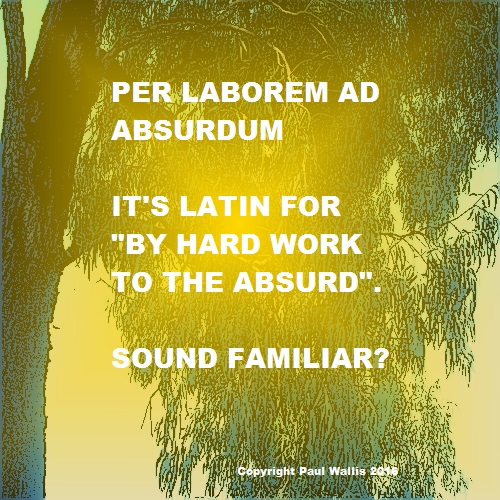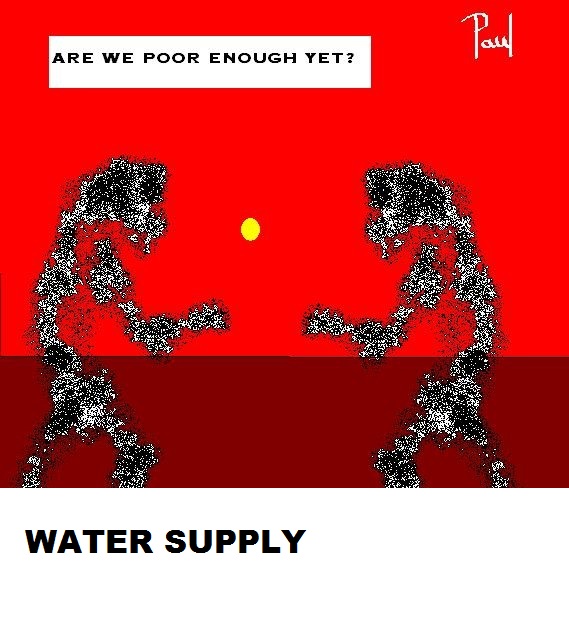This problem has been around for a while in modern times. Ancient infrastructure may be many things, but it’s also a risk factor for costs and a sort of hernia for modernizing anything. To give a well-known example -America’s rotting coast to coast infrastructure is the legacy of the boom times, and the sheer scale of that decaying infrastructure a serious issue obstructing much-needed upgrades.

Development is supposed to be a part of natural progress. Building on generations’ worth of previous development, however, is like building an obstacle course for yourself. The result is a dysfunctional, expensive, mess.
The future is now seen as a state of 11 billion people on a world where most of the development can’t handle 7 billion. The 11 billion are expected to arrive by 2050. This is no trivial issue. Future development has to be functional, safe, and efficient.
Which raises the questions:
- How do you develop or redevelop on that scale without building in the same problems for the future?
- How do you define overdevelopment? Too much of what, exactly?
- Can you create infrastructure which can be easily upgraded without the massive costs usually involved?
Most types of building have a degree of actual toxicity when they get too old. Older, unsafe materials, chemical residues, etc. all play a part in turning assets into liabilities. This toxicity is therefore literally built in to the living environments and work environments, etc.
Defining overdevelopment

Roads are the classic case in point for overdevelopment. The sheer scale and size of transport infrastructure dwarfs just about everything else. The old style road is basically a toxic waste dump. Asphalt, bitumen, and similar materials are high-end health risks. They’re also natural contaminants. You breathe in a certain amount of the roads, and anything deposited or released on them. You’re coated with these fine particulates, too.
Roads cost billions to maintain which could be diverted to more useful options. The materials typically used for roads are hundreds of years old, truly out of date in many ways. Better, cheaper, easier to manage materials are obviously required.
Vast amounts of land are buried under roads which could be better used for more modern living environments, and much better urban space management. A lot of space on roads is also either saturated or vacant, evidence that the whole idea of transport and space has to be re-evaluated.
For example – Reduce the volume of transport, and you free up space and improve space efficiencies. It’s so obvious how many benefits rationalizing transport has, and nothing much has been done.
The problem is obvious. People need roads. They also need space, preferably the best possible space management, for living. They don’t need the toxicity. They don’t need a life of gridlock, either. How do you achieve all these things?
Clean slate development

Clean slate development is drastic, but a better option than some. It involves a few basic principles:
- Remove all previous development entirely, including old landfill. This creates a fully open environment, with no liabilities and is much easier to build on than a sort of engineering crossword puzzle. Materials can be salvaged for modern re-use.
- Detoxify the area of contaminants. (The removal process can do a lot, but all toxic materials must be systematically eradicated from the overall living environment. This includes anything which can oxidize and release pollutants.)
- Build a planned environment with transport taking up X percentage of space, managing movement efficiently for fast transit and minimal toxicity risk. Also reduce the amount of space required for transport to make more space available for other purposes.
- Good materials are critical to good building. Use fully recyclable non-toxic materials which can be easily assembled and disassembled quickly. (You shouldn’t have to spend billions and years ripping up a few hundred metres of pipes, anyway.)
- Build to a clear quality of life standard. All homes, for example, must have communications, power, waste management, etc. set to a modern standard, not merely grafted on to anachronistic old systems as they are now.
Infrastructure

Demand for services from infrastructure will be at an all-time high in 30 years or so. Given the chronic state of the inefficiency of the current infrastructure, what’s to be done?
Short answer – You put about half a generation to work on reinventing the whole idea of infrastructure and building something which works. The backlog of infrastructure problems is pole to pole, and waiting for it to fix itself doesn’t seem to work.
Let’s start with the obvious:
- What infrastructure do you need? Water, power, sewerage, drainage, transport, waste management and communications more or less cover the basics. Can you create distribution systems which minimise cost and maximise efficiency?
- What volumes are involved? Overcrowding and demand crash the best infrastructure, sooner or later. It’s one of the major reasons for the constant crashing of the current infrastructure. Can you restrict overcrowding to take the load off the new infrastructure?
- What’s the best layout for your infrastructure? This is where overdevelopment really gets in the way of everything. If you had to rip up New York City to put in a few pipes, which is pretty much the case, you could say the layout is part of the problem. You need to reinvent the layout, not rebuild the problems.
- The new layout must meet future needs. You’ll have to rip out the old stuff anyway, but you can plan ahead for that and put in a new layout which can instantly connect with later redeveloped areas. The line of least resistance is likely to be new infrastructure embedded in new developments, in a planned way. Then, just join the dots as other areas are redeveloped. (New developments are a great option for eradicating expensive maintenance problems, too.)
Preservation and redevelopment

Preservation is often seen as an obstacle to development, but it doesn’t, and shouldn’t, have to be anything of the sort. “Preservation” doesn’t mean “fossilize the future”. These older spaces are often seen as real nuisances, but they do have a place in any society. That place, however, has to be clean, hygienic, and respectfully maintained with minimum downsides.
Older structures have a range of major issues. Historic homes, for example, typically require structural engineers to keep them standing. They weren’t designed to stand for hundreds or thousands of years, to start with. They can be unsafe, too. They usually need support brackets for stability, and perhaps a new support frame to maintain load integrity.
Development can be the working mechanism for retaining the old spaces and keeping them safe. Building in the new, better quality living spaces is pretty much standard practice, anyway. Effectively, you can clip them on to new spaces, and keep them.
Development, whether anyone likes it or not, IS the future. Get it right, and you won’t have to spend generations bitching about it. It’s that simple.